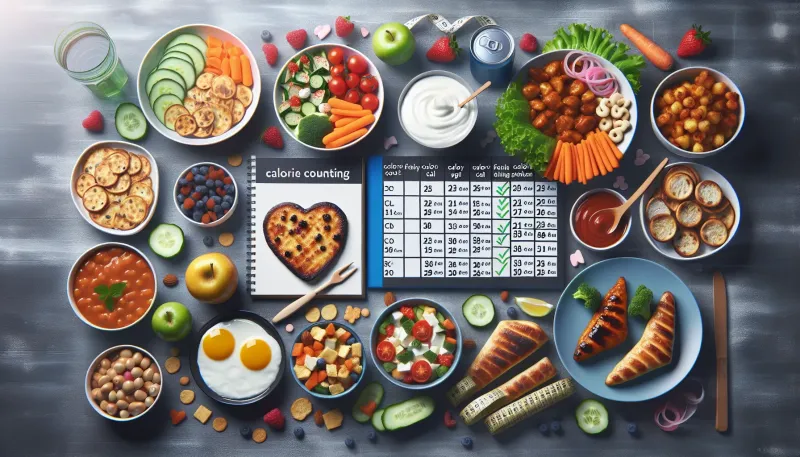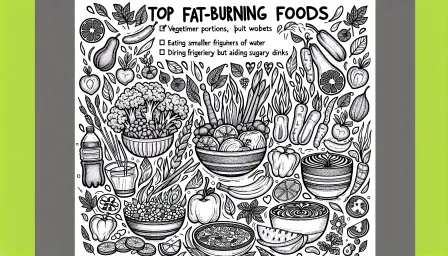Effective Calorie Counting Meal Plans to Reach Your Fitness Goals

Discover effective calorie counting meal plans designed to help you achieve your fitness goals. Learn strategies for accurate tracking and nutritious meal ideas.
Introduction
Reaching your fitness goals, whether it's weight loss, muscle gain, or maintaining a healthy weight, often involves understanding the concept of calorie counting. With effective calorie counting meal plans, you can take control of your dietary habits and ensure that you're consuming the right amount of nutrients. This article provides a comprehensive guide on creating and following effective calorie counting meal plans, ensuring you stay on track to achieve your fitness objectives.
Understanding Calorie Counting
Calorie counting involves tracking the number of calories you consume through food and drink to ensure you meet your personal energy needs. Doing so can help you regulate your weight and optimize nutrient intake. Here's what you need to know:
What Are Calories?
Calories are units of energy provided by food and beverages. Your body uses this energy to perform various functions, from basic metabolic processes to physical activities.
Why Count Calories?
Counting calories can help you achieve specific health and fitness goals by ensuring you're not consuming too much or too little energy. It provides insight into your eating habits and encourages mindful eating.
Creating a Calorie Counting Meal Plan
Crafting a calorie counting meal plan involves more than just adding up calories. It requires attention to macronutrients (proteins, fats, and carbohydrates) and micronutrients (vitamins and minerals). Here's how to get started:
Step 1: Determine Your Caloric Needs
First, calculate your Total Daily Energy Expenditure (TDEE), which accounts for your Basal Metabolic Rate (BMR) and physical activity levels. There are various online calculators that can help you with this.
Example Calculation:
- BMR: 1,500 calories/day
- Physical activity level: Moderate (TDEE multiplier: 1.55)
- TDEE: 1,500 x 1.55 = 2,325 calories/day
Step 2: Set Your Goals
Based on your TDEE, adjust your caloric intake to align with your fitness goals:
- Weight loss: Aim for a 500-calorie deficit per day.
- Muscle gain: Aim for a 250-500 calorie surplus per day.
- Maintenance: Aim to meet your TDEE.
Sample Calorie Counting Meal Plans
Below are sample meal plans designed for different caloric needs. Adjust portion sizes and ingredients to meet your specific requirements.
1,500-Calorie Meal Plan
- Breakfast: Greek yogurt with fresh berries and a drizzle of honey (200 calories)
- Snack: Apple slices with almond butter (200 calories)
- Lunch: Grilled chicken salad with mixed greens, cherry tomatoes, and vinaigrette (350 calories)
- Snack: A handful of nuts (150 calories)
- Dinner: Baked salmon with quinoa and steamed vegetables (400 calories)
- Snack: Cottage cheese with a sprinkle of cinnamon (200 calories)
2,000-Calorie Meal Plan
- Breakfast: Oatmeal with banana and walnuts (300 calories)
- Snack: Chia pudding with mixed fruits (200 calories)
- Lunch: Turkey and avocado wrap with a side of carrot sticks (450 calories)
- Snack: Smoothie with spinach, protein powder, and pineapple (250 calories)
- Dinner: Stir-fried tofu with brown rice and mixed vegetables (500 calories)
- Snack: Dark chocolate square (100 calories)
2,500-Calorie Meal Plan
- Breakfast: Scrambled eggs with whole-grain toast and avocado (400 calories)
- Snack: Greek yogurt with granola and berries (300 calories)
- Lunch: Quinoa salad with chickpeas, feta, and olives (500 calories)
- Snack: Hummus with cucumber and bell pepper slices (250 calories)
- Dinner: Grilled steak with sweet potato and asparagus (700 calories)
- Snack: Protein bar (350 calories)
Tips for Effective Calorie Counting
- Track Carefully: Use reliable apps or a food diary to record everything you eat and drink.
- Read Labels: Pay attention to nutritional information on packaging to understand serving sizes and calorie content.
- Plan Ahead: Prepare meals in advance to avoid unplanned, high-calorie snacks or meals.
- Stay Hydrated: Drink plenty of water as thirst is often mistaken for hunger.
- Balance Macronutrients: Ensure your diet includes a healthy balance of proteins, fats, and carbohydrates.
Common Mistakes to Avoid
- Underestimating Portions: Accurately measure your food to avoid unknowingly consuming excess calories.
- Skipping Meals: Maintain regular meal times to keep your metabolism active and avoid overeating later.
- Ignoring Nutritional Quality: Focus on nutrient-dense foods rather than just counting calories.
- Inconsistent Tracking: Consistency is key; ensure you track your intake every day.
Conclusion
Effective calorie counting meal plans are valuable tools to help you achieve your fitness goals by regulating your energy intake and improving your dietary habits. By understanding your caloric needs, setting realistic goals, and carefully planning meals, you can make significant progress towards a healthier lifestyle. Remember to track your intake accurately, focus on balanced nutrition, and avoid common mistakes. With dedication and consistency, you'll find that achieving your fitness goals through calorie counting is both manageable and rewarding.



























